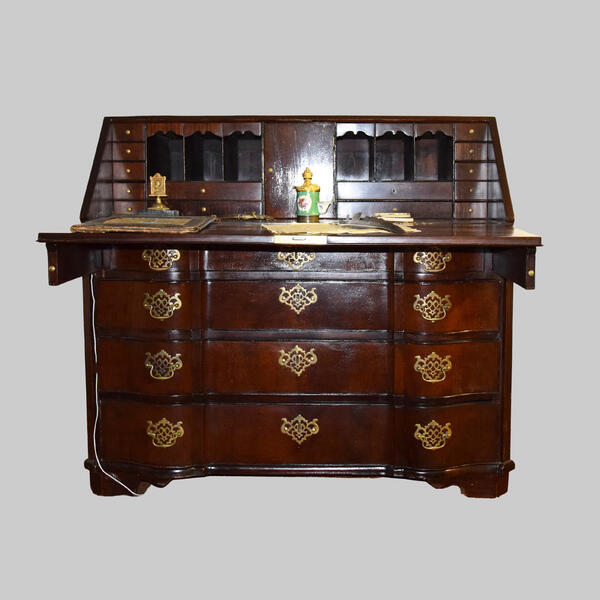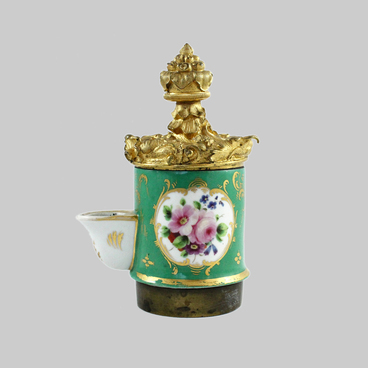The word ‘commode’, which is how the call a dresser desk in Russia, is French and means ‘convenient’. The prototype of the dresser was a chest, to which drawers and legs were added over time. This piece of furniture came into use at the beginning of the 18th century. This dresser appeared in France a little earlier, in the middle of the 17th century. It was made of various types of wood, decorated with expensive materials including mother of pearl, gilded and bronze overlays. The dresser served as a work table. It came in different forms: traditional, console, chest of drawers.
A dresser with drawers, along with a so-called secretary dresser or a dresser-table, is a typical piece of 19th century furniture. It was both for keeping things and writing letters. The displayed exhibit is in the office of Matvey Muravyov-Apostol, who, even while living in a distant Siberian town, surrounded himself with a tastefully furnished interior.
The dresser desk consists of two parts: the dresser with drawers and a desk. It was made in Russia in the first half of the 19thcentury. It was made using solid pine. The top was covered with veneer, thin slices of mahogany and varnish. Gracefully crafted handles with openwork fasteners were made of bronze.
The upper part of the dresser desk was folded back and turned into a kind of writing table. In it’s working position, this part was fixed with two retractable side plates or drawers.
The upper part was called the desk. It has a niche in the center with a little door and three drawers. There are seven symmetrically located drawers and three niches with a curtain on each side of the door,. The dresser desk consists of three high and one narrow drawers.
The dresser desk was transferred from the State Historical Museum in 1969 specifically to create a new exhibit in the memorial house of M.I. Muravyov-Apostol. In 2005, the staff of the Sverdlovsk Regional Museum of Local Lore restored the dresser. The experts removed the old varnish and glue and restored the back of the dresser. In addition, they reinforced the structure, restored the finish of the drawers, the office doors, covered them with mahogany veneer and varnish.
A dresser with drawers, along with a so-called secretary dresser or a dresser-table, is a typical piece of 19th century furniture. It was both for keeping things and writing letters. The displayed exhibit is in the office of Matvey Muravyov-Apostol, who, even while living in a distant Siberian town, surrounded himself with a tastefully furnished interior.
The dresser desk consists of two parts: the dresser with drawers and a desk. It was made in Russia in the first half of the 19thcentury. It was made using solid pine. The top was covered with veneer, thin slices of mahogany and varnish. Gracefully crafted handles with openwork fasteners were made of bronze.
The upper part of the dresser desk was folded back and turned into a kind of writing table. In it’s working position, this part was fixed with two retractable side plates or drawers.
The upper part was called the desk. It has a niche in the center with a little door and three drawers. There are seven symmetrically located drawers and three niches with a curtain on each side of the door,. The dresser desk consists of three high and one narrow drawers.
The dresser desk was transferred from the State Historical Museum in 1969 specifically to create a new exhibit in the memorial house of M.I. Muravyov-Apostol. In 2005, the staff of the Sverdlovsk Regional Museum of Local Lore restored the dresser. The experts removed the old varnish and glue and restored the back of the dresser. In addition, they reinforced the structure, restored the finish of the drawers, the office doors, covered them with mahogany veneer and varnish.



